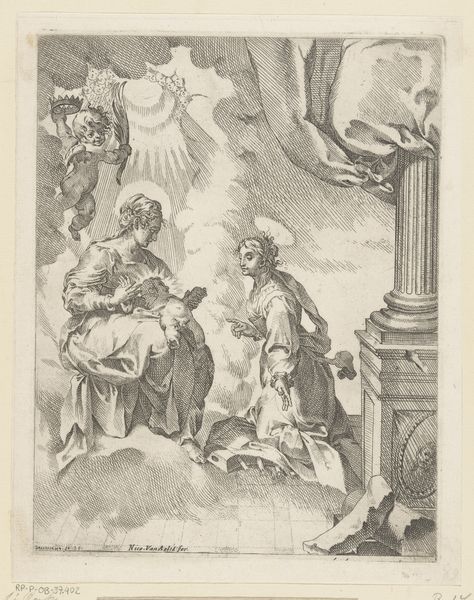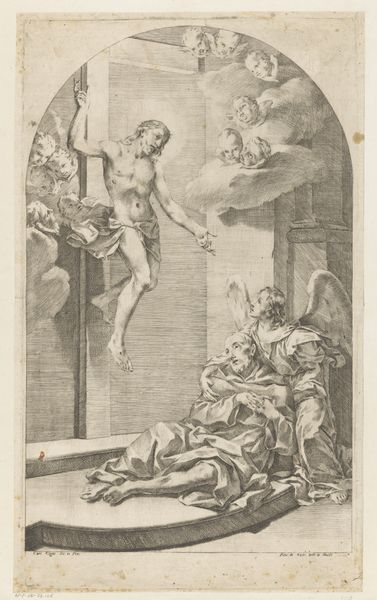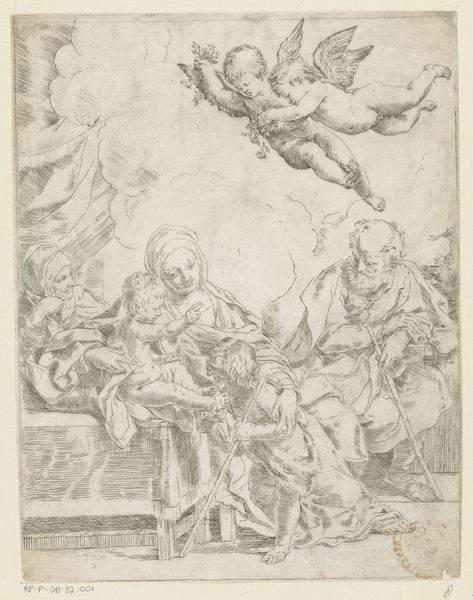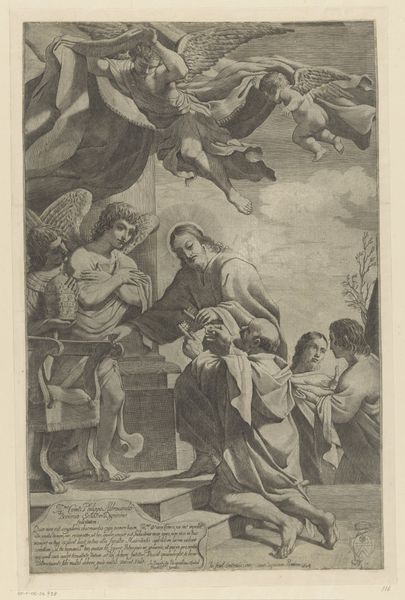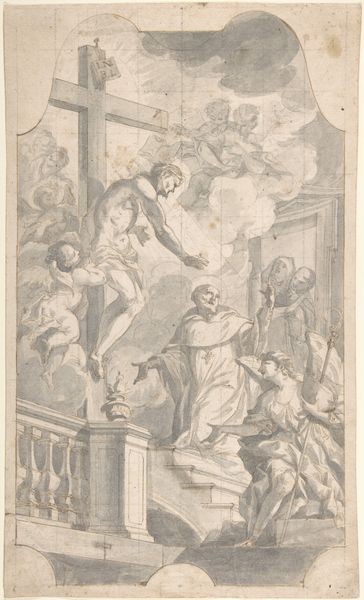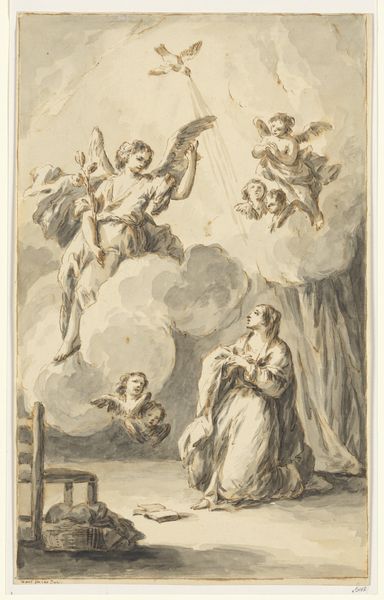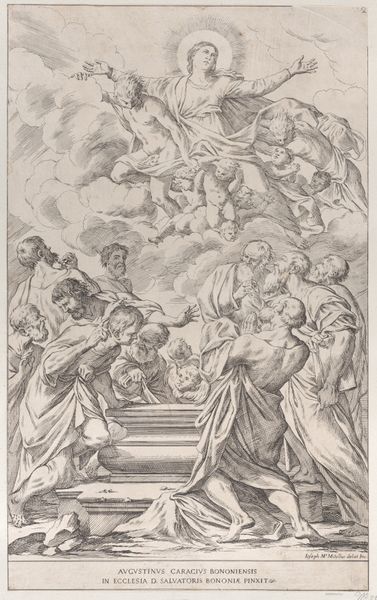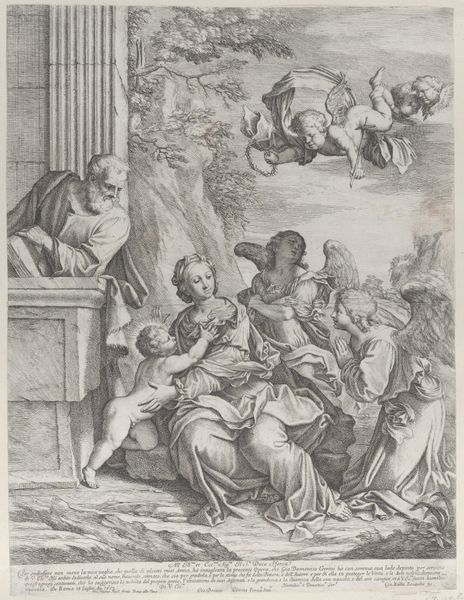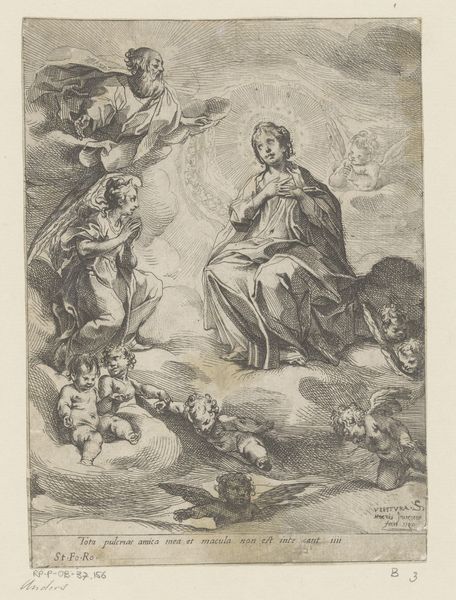
The Holy Family with Young Saint John the Baptist and Saint Elizabeth c. 1640 - 1660
0:00
0:00
drawing, print, etching
#
drawing
#
baroque
# print
#
etching
#
etching
#
figuration
#
history-painting
Dimensions: 10 5/16 x 7 3/4 in. (26.19 x 19.69 cm) (image, sheet)11 15/16 x 9 1/4 in. (30.32 x 23.5 cm) (mount)18 x 14 in. (45.72 x 35.56 cm) (mat)
Copyright: Public Domain
Curator: This print, titled "The Holy Family with Young Saint John the Baptist and Saint Elizabeth," was created sometime between 1640 and 1660. It resides here at the Minneapolis Institute of Art. Editor: It’s beautiful. The scene feels so intimate and the linework gives it a soft, almost dreamlike quality despite the clear definition of each figure. Curator: The artist skillfully employed etching techniques, a method allowing for detailed and expressive lines, to depict this gathering of biblical figures. We can see the Virgin Mary and the infant Jesus, accompanied by Saint Elizabeth and the young John the Baptist, all presided over by hovering angels. Editor: I find it fascinating how prints like these democratized art. An etching like this meant that devotional images weren’t just for the wealthy elite, changing who had access to religious narratives and shaping their personal interpretations. What materials would have been used, and how readily available would they have been? Curator: The tools involved—etching needles, copper plates, acids, and printing presses—represented a significant investment of labor. The distribution networks that disseminated prints across regions are a real feat of early capitalism! The lines created offer form but also shading, building up the forms into an ethereal and yet material imagining of holy figures. Editor: I’m struck by the cultural implications of presenting the Holy Family in such a domestic, accessible setting. It speaks to a desire for a more personal connection with religious figures. Were these images typically commissioned, or were artists producing them speculatively for a growing market of religious consumers? Curator: Both likely occurred. Religious orders commissioned prints for distribution, but an open market also existed where artists or printmakers speculated on popular religious subjects, like this scene of familial piety. We can imagine workshops producing these images serially, focusing on efficiency. It changes our perspective on artistic intention. Editor: Absolutely, and it allows us to appreciate how even ostensibly devotional art is deeply intertwined with the means and social contexts of its production. It enriches the image with multiple levels of understanding. Curator: Agreed. Examining this etching reveals not just a scene, but also the social fabric of 17th-century religious life and the labor involved in artistic production.
Comments
No comments
Be the first to comment and join the conversation on the ultimate creative platform.



